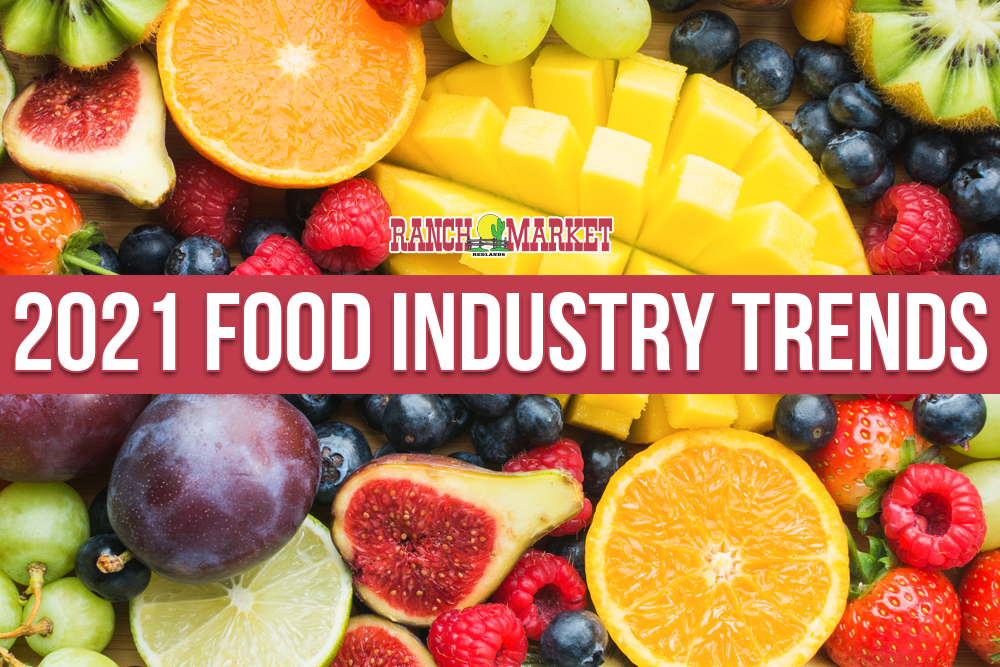The first part of this blog addressed 3 food industry trends that have already begun to affect us in 2021. From takeout/delivery expectations to the relationship between food & technology to various changes in health, these trends will likely continue to affect us for an unforeseeable amount of time in the future.
Now let’s conclude this discussion with the remaining 3 trends:
Pushing labels (Trans Fat, GMO, calories)
Leveraging taste and functionality
Adjusting the in-person dining experience in a post-pandemic world
PUSHING LABELS (TRANS FAT, GMO, CALORIES)
We live in a unique society where people don’t want labels, to be labeled, or to do the labeling. But the food industry doesn’t and can’t really abide by our rules.
Food labels are necessary to identity what type of product we’re consuming. Thanks to labels, we can understand composition, ingredients and their relative amounts, quality, origin, processing and preservation, and way more than we could consume… figuratively, of course.
The information on a food label gives us as the consumer the opportunity to consciously choose what to purchase — concretely helping us in protecting and improving our health. So what can we expect from this trend of pushing labels?
With increasing public awareness regarding food-related health problems like obesity, diabetes, and hypertension, food producers and manufacturers are under experiencing more than the usual pressure by the public to label their products accordingly.
This is why trans fats and GMO labeling is already in force in some countries.
Related reading(s): The Top 4 Issues Faced By The Foodservice Industry Today; Are Food Labels Effective as a Means of Health Prevention?
With everything just a Google search away, food products are pressured to come out with their version of clean labels. We’re sure you’re aware of how some restaurants have started to include caloric information on their menus. And at the very least, restaurants have started to provide detailed nutritional information accessible to the public through their websites.
Food labels, including nutritional and caloric information, contain information about what is in the food items, how it is made, and by whom it is made.
This is due to the desire of “clean eaters” to protect their health and wellness. In fact, if consumers can’t access this information nowadays, they’ll have no qualms about not purchasing the food product.
So much emphasis is now placed on information; that’s why manufacturers are pressured to create high-quality products that do not adversely impact health.
So, what do you think: To label, or not to label?
Sure, many people are against labeling, but when it comes to the food industry, it looks like this is something that’s not only here to stay, but also here to expand and shape how we interact with the foods we purchase.
LEVERAGING TASTE AND FUNCTIONALITY
This is an interesting topic/trend, right? Isn’t all food functional? Most of us have experienced the sweetness that comes with childhood (and the cavities) and can probably answer this question with ease: Nope.
But when it comes to functional, tasty food, we’re recognize that consumers don’t just want food that tastes, looks, and smells good. They’re also looking at the role particular food items can play in promoting good health.
Kalsec published a whole list of expectations in the food and beverage industry. This includes culture, modern twists, and even innovative takeout meal options. But we’re focusing on food that’s both delicious and practical.
The pandemic has ‘fast-tracked’ many consumers to take a higher interest in the nutrition of their food, including the health benefits of ingredients and specific ‘functional’ foods.
As consumers had more down time in 2020, we saw them use this time to understand what they eat (you’re in your home all day… might as well check out that kitchen and see what your belly has to work with).
Functional in this industry doesn’t necessarily mean new ingredients being added to a food or beverage (although this may be the case as well). Functional is more about the repositioning of products to include new health and label claims. (We talked about labels right before this).
For example, ingredients that provide immunity boosts, a beverage that also works as a sleep aid, and, well, the kombucha craze (need we say more?).
One of the biggest functional categories that we expect food and beverages to incorporate more this year and moving forward is those with a focus on mental health and mood modifying ingredients.
We also expect repositioning around food and beverages that are not always deemed healthy. For example, beers that aid with running, hard seltzers, and fermented foods that provide probiotic benefits.
ADJUSTING THE IN-PERSON DINING IN A POST-PANDEMIC WORLD
For Food
Customers want an experience and will go to great lenghts to experience the experience. Strong industry trends include outdoor dining, pre-packaged foods from grocery markets, and fresh-prep vending machines.
Other important trend:
heritage cooking
next-level charcuterie
limited, delivery-only menus.
Ghost kitchens, also known as dark kitchens, are a unique trend that offer many possibilities. These commercial kitchens are optimized for food delivery, with each kitchen located in areas with a high concentration of delivery demand.
The kitchens themselves don’t have a storefront and the staff prepares dishes off of their menus that are only available for delivery. Think of this new-age concept like a food court, but without the human interaction part. You can go to this “food court” after you’ve ordered what you want. Doesn’t matter if you’re ordering from 1 place in that “court” or 3 different places, they’re all available in that central location; all you have to do is order, arrive, pick up, and go.
The possible downside is recent research found consumers prefer to pick up food from locations where they can actually dine, but ghost kitchens can overcome this obstacle with a strong, grounding story.
For Beverages
Outdoor breweries offer a safe setting that helps consumers reset and refresh. Amenities such as heat lamps, fire pits, or beer gardens can encourage guests to lose themselves in the experience. And did you know that Tropical- and nautical-themed bars are more calming than festive Tiki?
These settings support storytelling and experimentation with beverages and ingredients from coastal and island regions.
Also looking to trend are cocktail bars — for example, martini bars, wine bars, and tequila bars — that focus on spirit-forward classics and offer automated, touchless stations.
Talk about meeting up for some drinks! These cocktail-specific bars might be so new that you’ve barely heard of them, but the idea of grabbing a specific drink with friends is almost as exciting as going to a winery or a brewery. Now all we need is one for us tea drinkers!
If you’re interested in more food trends, check out this article. It covers this topic and includes additional details not addressed in this blog.
IN CONCLUSION
Like we said in part I of this blog: The world pulled a Patrick Star and was basically been living under a rock for the past year. We’re essentially out of the rock now, but there are still some “new norms” we need to better understand, elaborate on, and have conversations around.
It should also be repeated that food manufacturing is one of the few sectors where it is not possible to work from home — you can’t package meat over Microsoft Teams (though that would be absolutely bonkers (in a cool way) if we could). That’s next-level technology that we’re probably not ready for.
Anyway, we still need to ensure that safety standards are upheld in the industry if a high level of consumer trust is to be maintained. Are food manufacturers actually promoting the safety of our food before it gets on our plates? How well are those making the food attended to?
Keeping workers safe and restoring confidence in the workforce will continue to be key for companies throughout 2021. In the meantime, you know the trends, you know what to expect, and you know how can you contribute to make these promising trends a sure, lasting reality.


